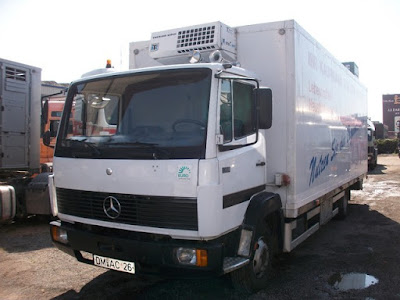Understanding Truck and Tractor-Trailer Blind Spots: What Every Driver Needs to Know

Truck and tractor-trailer drivers operate some of the largest and most complex vehicles on the road. Due to their size, these vehicles have significant blind spots — areas around the truck where other vehicles or pedestrians are not visible in the mirrors. These blind spots, often referred to as “No-Zones,” pose serious safety risks if not properly managed. Understanding and mitigating these blind spots is essential for safe driving and accident prevention.
Where Are the Blind Spots?
- Front Blind Spot
- Located directly in front of the truck’s cab.
- Drivers often cannot see vehicles or obstacles within about 20 feet in front.
2. Rear Blind Spot
- Located directly behind the trailer.
- Can extend up to 200 feet behind the truck.
- Rear-view mirrors do not cover this area, making reversing particularly dangerous.
3. Side Blind Spots
- On both sides of the truck, particularly the right side (passenger side).
- Can extend across multiple lanes.
- These are the most dangerous blind spots due to their size and position.
Why Understanding Blind Spots Is Critical
- Preventing Collisions: Most accidents involving trucks and smaller vehicles happen because the smaller vehicle is in a blind spot and the truck driver cannot see it.
- Lane Changes and Turns: Trucks need ample space to change lanes or turn. A vehicle lingering in a blind spot can easily be sideswiped.
- Protecting Pedestrians and Cyclists: In urban settings, pedestrians and cyclists are particularly vulnerable if they enter a truck’s blind zone.
What Truck Drivers Need to Do
- Check Mirrors Frequently
- Regular mirror checks can help identify vehicles entering and leaving blind spots.
- Install wide-angle or blind-spot mirrors for better visibility.
2. Use Turn Signals Early
- Always signal well in advance before changing lanes or turning.
- This alerts nearby drivers and gives them time to move out of the blind spot.
3. Avoid Sudden Maneuvers
- Gradual movements help ensure the driver has time to fully assess blind spots.
4. Use Cameras and Sensors
- Newer trucks may be equipped with blind-spot monitoring systems.
- Utilize these tools to enhance awareness and reduce risk.
5. Conduct Proper Training
- Comprehensive training should include blind spot education and situational awareness exercises.
- Practicing maneuvers in a controlled environment can help build confidence.
Raising Awareness in Nigeria
In Nigeria, where road safety challenges are prevalent, truck drivers often operate in congested conditions with limited infrastructure support. Many drivers are unaware of the full extent of their vehicle’s blind spots, increasing the likelihood of accidents involving cars, motorcycles, or pedestrians.
Action Steps for Nigerian Drivers and Transport Authorities
- Driver Education: Include blind spot awareness in licensing and training programs.
- Vehicle Upgrades: Encourage the use of extended mirrors and camera systems.
- Public Awareness Campaigns: Educate other road users about truck blind spots to avoid lingering in danger zones.
- Strict Enforcement: Ensure vehicles without adequate visibility aids are not allowed to operate.
Conclusion
Blind spots are an inherent risk in truck and tractor-trailer operations, but with proper knowledge and consistent safety practices, they can be managed effectively. For Nigerian truck drivers, increasing awareness of blind spots and adopting visibility-enhancing tools and habits can lead to safer roads for everyone. Understanding and respecting these No-Zones is not just about compliance — it’s about saving lives.



Comments
Post a Comment